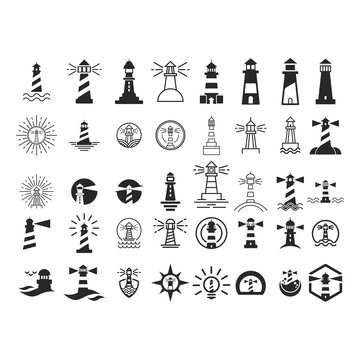Throughout history, lighthouses have stood as steadfast sentinels against treacherous waters, guiding mariners to safety with their unwavering beams. In the world of branding and design, the lighthouse has emerged as an equally powerful symbol—representing guidance, safety, resilience, and hope. Lighthouse logo designs capture this rich symbolism, offering businesses across various industries a timeless emblem that communicates trust and direction to their audience.
From financial institutions and consulting firms to coastal businesses and nonprofit organizations, the lighthouse logo transcends categories with its versatile imagery. Unlike trend-driven designs that come and go, the lighthouse emblem possesses an enduring quality that speaks to fundamental human needs for security and guidance. This article explores the compelling features, design variations, and symbolic power of lighthouse logos that make them perennially effective in brand communication.
The Symbolic Foundation of Lighthouse Logos

Additionally, the lighthouse symbolizes strength and resilience. Built to withstand powerful storms and crashing waves, it represents stability and reliability—qualities that financial services, insurance companies, and security firms want to associate with their brands. The isolation of many lighthouses also suggests independence and self-reliance, while their purposeful construction communicates intentionality and strategic positioning.
Design Elements and Variations
Lighthouse logos display remarkable diversity in their execution while maintaining recognizable core elements. The most effective designs balance the intricate details of lighthouse architecture with the simplicity required for versatile branding applications.
Many designers choose to incorporate the beacon of light as a dynamic element, using rays that extend outward to suggest illumination, reach, and influence. This beam can be rendered as subtle gradients, stark contrasting lines, or even abstract patterns that suggest light dispersion. The surrounding environment—whether featuring waves, rocks, or simply standing against a clean background—also contributes significantly to the logo’s narrative and emotional impact.
Style variations range from highly detailed illustrations that showcase specific architectural features to minimalist silhouettes that reduce the lighthouse to its essential forms. Color palettes similarly vary from classic red and white combinations that reference actual lighthouses to monochromatic designs that emphasize form over color, or unexpected color schemes that help the logo stand out in competitive markets.
Defining Features of Effective Lighthouse Logos
Strategic Symbolism
Scalability
Versatile Color Schemes
Balanced Composition
Adaptability
Industry Applications
The lighthouse logo finds particular resonance in certain industries where its symbolism aligns perfectly with business objectives. Maritime businesses, coastal restaurants, and waterfront properties naturally leverage the lighthouse motif to establish their geographic connection and nautical theme.
Beyond obvious coastal applications, lighthouse logos prove effective for financial advisors, consulting firms, and educational institutions that wish to position themselves as guides helping clients navigate complex waters. Technology companies sometimes use abstracted lighthouse imagery to represent innovation, vision, and cutting-through complexity with brilliant solutions.
Nonprofit organizations and religious groups frequently adopt lighthouse imagery to communicate their mission of providing hope, guidance, and safe harbor to those in need. In each case, the logo serves as a visual shorthand for the organization’s values and value proposition.
Conclusion: A Timeless Beacon in Branding
When thoughtfully executed, a lighthouse logo becomes more than just a mark—it becomes a brand promise. It assures customers that the company will guide them through complexity, provide safety in uncertain times, and remain steadfast in its values. In an increasingly volatile commercial landscape, these are powerful assurances that create lasting emotional connections with audiences.
As branding continues to evolve toward authenticity and meaning, the lighthouse emblem stands ready to serve as a beacon for businesses that aim to project not just products or services, but purpose and principle. Its light continues to guide brands toward distinctive, meaningful identities that withstand the test of time and changing tides of consumer preference.





